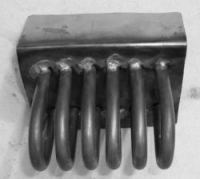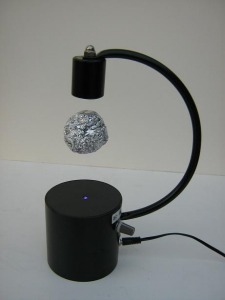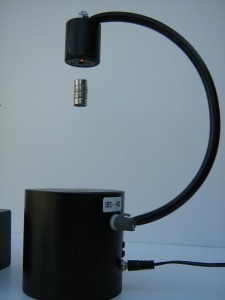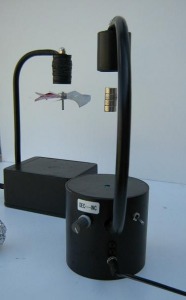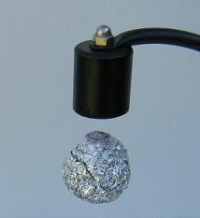
|
| Magnetic Levitation Project. |
Page 1 | 2 | 3 |
Designed and built by forum member Pete ( Downwind ), this project demonstrates magentic levitation. It's a fun and eductaional project. In Pete's words...
MAGNET LEVITATION
I seen a gadget that had a magnet levitating in mid air, and started to wonder how it was done, so decided to test a few theory’s.
After a little trial and a few errors, I managed to get one to work.
The basic principle is a coil to create a magnet field and a linear hall sensor on the face of the coil, to detect the field of the permanent magnet as it approaches, then turn the coil off, as the magnet falls way from the coil, this then triggers the coil to switch back on again, effectively keeping the magnet in levitation.
I wound a small coil with 0.45mm enamel copper wire, over all size and number of turns is not over important, but the resistance needs to be high enough to not exceed the power supply current limit.
I wanted to stay below 0.5 amp with a 5 volt supply (5 / 0.5 = 10 ohms) and targeted 10 to 15 ohm coil.
As the circuit has now developed to turn the coil off in the absence of a magnet, the coil resistance could be reduced to 5 ohms or above. |
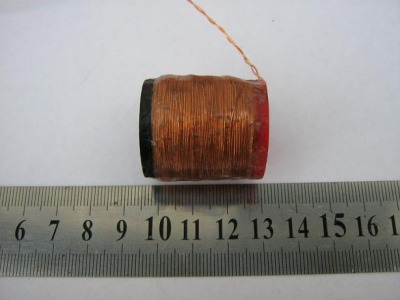 |
A metal plate needs to be attached to the bottom of the coil, this can be the head of a large bolt or several washers stacked together.
The device works in the small area of distance where the magnet is just not able to have enough pull to attach itself to the metal and needs the little help from the coil to pull it up, the coil on its own is not strong enough and the metal plate is needed in conjunction with the coil.
I cut out a solid 5mm metal disc to match the coil diameter, but full diameter of the coil is not needed.
|
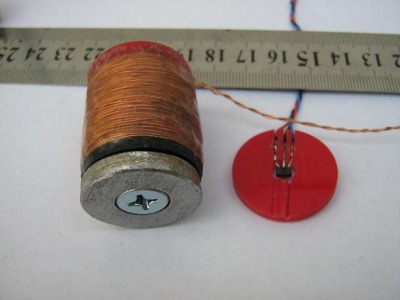 |
The hall sensor is attached to the metal plate, the flat side of the hall sensor faces towards the coil.
For ease of fitting I mounted the sensor in a plastic disc I cut from some acrylic sheet, but tape or glue will work.
It is important to mount the sensor close to centre of the coil/metal plate.
Note:- the side of the sensor with the rounded corners faces the magnet. |
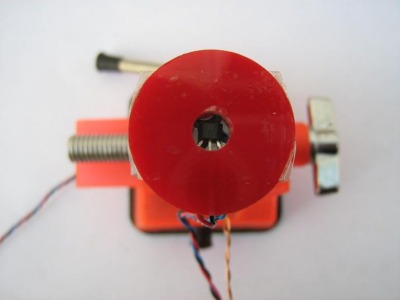 |
| |
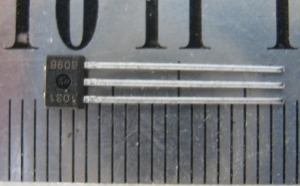
This side to face the coil. |
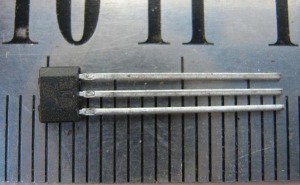
This side to face the magnet. |
Next Page.  |


